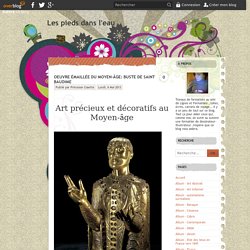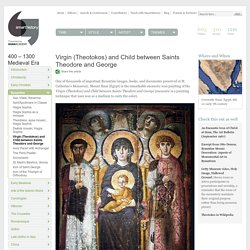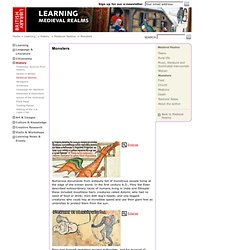

Oeuvre émaillée du Moyen-âge: Buste de Saint Baudime - Les pieds dans l'eau. Art précieux et décoratifs au Moyen-âge Buste de Saint Baudime, 2eme quart ou milieu du XIIeme siecle, église Notre-Dame-du-Mont-Cornadore, H.73cm L’église Notre-Dame-du-Mont-Cornadore construite au début du 12ème s., dans le Puy-de-Dôme fût édifiée sur le sanctuaire de Saint Nectaire ainsi que sur les tombeaux du saint, de saint Baudime et saint Auditeur.

Envoyé tous trois en 300 ap. J-C par saint Pierre pour prêcher la bonne parole, Austremoine, premier évêque de Clermont, les chargea de diffuser l’Evangile de la Limagne Issoirienne jusqu’au Monts Dore. A la mort de saint Nectaire, saint Baudime érigea le tombeau de son ami à la place de l’actuelle église. L’édifice conserve ses trésors depuis sa construction, dont le buste de Saint Baudime.
Œuvre du 2ème quart du 12ème s., nous pouvons nous demander en quoi cette œuvre est-elle représentative de l’art d’orfévrerie à l’époque médiévale. Au 12ème siècle, les routes sont plus sûres qu’à l’époque des invasions barbares. www.saylor.org/site/wp-content/uploads/2011/05/ARTH401-2.3.1.1-Early-Icons-FINAL.pdf. Virgin (Theotokos) and Child between Saints Theodore and George. One of thousands of important Byzantine images, books, and documents preserved at St.

Catherine’s Monastery, Mount Sinai (Egypt) is the remarkable encaustic icon painting of the Virgin (Theotokos) and Child between Saints Theodore and George (encaustic is a painting technique that uses wax as a medium to carry the color). Virgin (Theotokos) and Child between Saints Theodore and George, sixth or early seventh century, encaustic on wood, 2' 3" x 1' 7 3/8" (St. Catherine's Monastery, Sinai, Egypt) The icon shows the Virgin and Child flanked by two soldier saints, St. Theodore to the left and St. The painter selectively used the classicizing style inherited from Rome.
The space appears compressed, almost flat, at our first encounter. At the top of the painting an architectural member turns and recedes at the heads of the angels. New in our icon is what we might call a “hierarchy of bodies.” The Virgin averts her gaze and does not make eye contact with the viewer. Text by Dr. Library Log in. Preview of Gargoyles : from the archives of the Grey School of Wizardry. <div id="div-javascript"> Your Web browser is not enabled for JavaScript.

Some features of WorldCat will not be available. </div> Advanced Search Find a Library << Return to Detailed Record Gargoyles : from the archives of the Grey School of Wizardry Contents WorldCat is the world's largest library catalog, helping you find library materials online. Follow WorldCat: Please sign in to WorldCat Don't have an account? Cancel Forgot your password? Savages, Wild Men, Monstrous Races: The Social Construction of Race in the Early Modern Era. Kindred qualities of abstraction from natural behavior and appearances, bizarre fantasy,complexity and invention.”

The most well-known images of the early colonization and conquestof the Americas, produced by the De Bry family at the end of the 16 th century, fit thischaracterization well. Even a cursory review of a representative selection of de Bry’sengravings, as they are published in Michael Alexander’s. Monsters. Numerous documents from antiquity tell of monstrous people living at the edge of the known world.

In the first century A.D., Pliny the Elder described extraordinary races of humans living in India and Ethiopia: these included mouthless hairy creatures called Astomi, who had no need of food or drink; men with dog’s heads; and one-legged creatures who could hop at incredible speed and use their giant feet as umbrellas to protect them from the sun. Pliny was himself repeating ancient authorities, and his account of these marvellous races was in turn influential throughout the Middle Ages, during which antique monster lore became part of a Christian framework.
For Christians, the monstrous races tested not only their credulity, but also their ethics. Monstrous illustrations Interest in monstrous races endured through the Middle Ages. Demons in Christianity Demonising difference Bestiaries The natural world was also interpreted as the expression of a moral system.